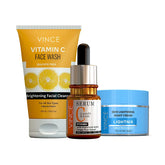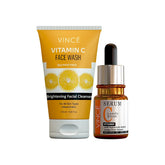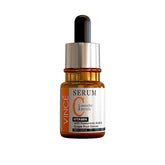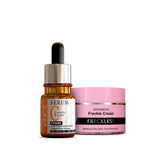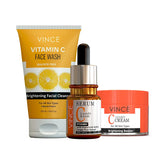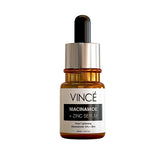Differentiating Between Physical and Chemical Sunscreen
The awareness and urge to find suitable sunscreen for one’s skin is undoubtedly increasing day by day. Wearing sunscreen isn’t required outdoors, rather it should be part of daily skincare routine regardless of weather conditions. Sunscreens prevent skin from invisible harmful UV rays, premature aging, and sunburn.
Product protection depends on ingredients, type, and SPF level. Physical and chemical sunscreens are the types people can choose from, according to their skin type. Both types are used for photo-protection but ingredients, mechanisms, and characteristics differ, making them suitable for different skin types. Let’s dive into the details to see the difference between physical and chemical sunscreen.
1. Difference between Physical and Chemical Sunscreen
A proper skincare routine demands suitable sunscreen along with other skin products. The availability of physical and chemical sunscreen provides options, on the one hand, but on the other hand, makes it difficult to choose without sufficient knowledge. As both sunscreens offer photo protection against ultraviolet rays, the question arises which sunscreen should be opted for? Let’s check the detailed information on both sunscreens.
Physical Sunscreen
Physical sunscreens, also known as mineral sunscreens, are made of minerals to offer sun protection by creating a physical barrier by staying on the surface of the skin and reflecting the detrimental UV rays. The complete guide is given below to enhance awareness.

Active Ingredients:
As the name suggests, physical sunscreens contain minerals as active ingredients such as zinc oxide or titanium dioxide. These minerals create a barrier on the skin to reflect the UV rays. The inclusion of minerals makes them broad-spectrum naturally to offer greater protection against UVA and UVB rays.
Important Link: Why is Sunscreen Essential For Sensitive Skin?
Mechanism:
How does physical sunscreen work? is the basic question while opting for a suitable product. These sunscreens stay on top of the skin to create reflective barriers against damaging UV rays. As they don’t penetrate the skin, therefore its previous application is not required. But it’s of utmost importance to apply a generous amount to have full coverage for proper sun protection.
Characteristics:
Physical Sunscreens have unique features. They can start working immediately after application and may have white-cast. Due to their mineral-based ingredients, there are fewer chances of skin irritation, making them suitable for sensitive skin. Minerals are also safe for marine life, in case of sun exposure at the beach.
Chemical Sunscreen:
Chemical sunscreen, also known as organic sunscreen, on the other hand, has a carbon-based chemical formulation that absorbs into the skin, giving a smooth and matt finish. These sunscreens let the sunscreen and UV rays absorb into the skin and form a chemical reaction. After a chemical reaction, the UV rays are converted into heat and released from the face or body.
Active Ingredients:
The ingredients in Chemical sunscreens are chemical based and contain active ingredients such as Avobenzone, Oxybenzone, Octinoxate, octisalate, octocrylene, and homosalate that are absorbed into the skin and provide sun protection by converting UV rays into heat to be released from the skin, through a chemical reaction.
Important Link: Best Sunscreen For Combination Skin In UAE
Mechanism:
The first thought that comes to mind at the time of choosing the right product is, how does chemical sunscreen work? Chemical sunscreens absorb into the skin giving a spotless look. The absorbed elements let the UV rays enter into the skin and release them from the skin through chemical reactions. Since these sunscreens work through the absorption of their ingredients, it's important to apply them about 20 minutes before sun protection to get optimal protection.
Characteristics:
Different formulations of physical sunscreen also create different characteristics. These sunscreens absorb into the skin without creating white-cast, making them look elegant due to their invisibility. They can cause allergic reactions or skin irritation in the case of sensitive skin. The absorption mechanism requires about 15-30 minutes to take effect after application.
2. Sunscreen and Skin Types
Picking suitable sunscreen for different skin types requires consideration of ingredients and formulation and how they will work on your skin. Here’s a comprehensive guide about physical and chemical sunscreens related to each skin type.
Sunscreen For Oily Skin
Oily skin produces excessive sebum, causing a greasy and shiny look on facial skin. This skin type necessitates the careful selection of sunscreens that cater for sun-protection as well as for oily skin concerns. Generally oil-free, matt finish, non-greasy, broad-spectrum features are a must additionally, chemical sunscreens work best for oily skin.

Sunscreen For Dry Skin
Dry skin is usually rough, dry, and flaky due to a lack of moisture in the outermost layer of skin. This specification requires the skin to be moisturized and hydrated all the time. So, the ideal choice for sunscreen can be the hydrating physical sunscreen with water-resistant, and broad-spectrum features.

Sunscreens For Combination or Sensitive Skin
The combination skin type is dual-textured skin, having oily T-zone and dry areas on the rest of the face. Due to the double-textured nature, skin concerns such as dark spots, uneven skin tone, and a dull appearance are likely to intensify in hot and humid climate during summer. The ultimate solution is finding the best sunscreen to avoid all these concerns for combination skin can be a bit challenging but not impossible.
The ideal choice is the physical sunscreen with broad-spectrum, matt finish, non-greasy and water-resistant properties. The mineral-based formulation makes it suitable for this type of skin as there are fewer chances of allergic reactions or skin irritation. Vince Sunblock SPF (40), UVA & UVB Protector SPF (50), and UVA & UVB Protector SPF (75) are all perfect picks for all skin types, especially for sensitive skin.
Sunscreen For Normal Skin
Normal skin is neither too oily nor too dry, rather it has a balanced texture which gives a radiant look and healthy skin. Skin irritation isn’t a concern of this type. The normal texture of the skin makes it easy to choose the best sunscreen physical vs chemical for everyday use. Both the sunscreens can work well as there aren’t any skin concerns.
Important Link: Best Sunscreen For Dry Skin In Dubai, UAE
3. Sun Protection Factor
SPF stands for sun protection factor and measures the sunscreen’s efficacy against UV rays. Both types of sunscreens with the same SPF level offer similar protection against UV rays. For instance, SPF 30 in both types blocks about 97% of UV rays. Therefore, the SPF ratings needed, depend on the type of skin and the kind of sun exposure. Vince Sunblock SPF (40), UVA & UVB Protector SPF (50), and UVA & UVB Protector SPF (75) offer a wide range of sun-protectors perfect for greater protection.
4. Key Differences
Both sunscreens offer protection against UV rays, premature aging, and sunburn. The differences lie in the active ingredients and mechanism. A quick overview of the key differences may help you to decide better.
- Physical sunscreens are mineral-based, whereas chemical sunscreens are based on chemical formulation.
- The active ingredients in physical sunscreen are minerals such as zinc oxide or titanium dioxide. However, chemical sunscreens take in ingredients like Avobenzone, Oxybenzone, and Octinoxate.
- Physical sunscreen stays on top of the skin to reflect UV rays, but chemical sunscreen absorbs into the skin to prevent damage against UV rays by inactivating them via chemical reaction.
- Physical sunscreens are gentle on the skin and less likely to cause skin irritation, on the other hand, chemical sunscreens are prone to allergic reactions and skin irritation.
Conclusion
Sunscreen is becoming the most vital element in a skincare routine. Although choosing between physical or chemical is a personal choice, the differences stated above offer a complete guide to facilitate finding the best type of product (mineral or chemical) according to different skin types. Remember! Choosing suitable sunscreen not only provides photoprotection but helps to attain a healthy, fresh, and radiant appearance.
Important Link: Why is Sunscreen Essential For Sensitive Skin?
Frequently Asked Questions (FAQs)
Q1. What is the difference between physical and chemical sunscreen?
Physical sunscreen is mineral-based, gentle on the skin, stays on top of the skin, and reflects UV rays, whereas, chemical sunscreen is chemical-based, can cause irritation, absorbs into the skin, and offers sun protection by inactivating UV rays via chemical reaction.
Q2. Which type of sunscreen is better for sensitive skin, physical or chemical?
Physical sunscreen is better for sensitive skin as it contains minerals as active ingredients such as zinc oxide or titanium dioxide. It is gentle on the skin and less likely to cause skin irritation. Therefore, it’s the ideal choice for sensitive skin as it offers immediate sun protection. Vince Sunblock SPF (40), UVA & UVB Protector SPF (50), and UVA & UVB Protector SPF (75) are the best options for all skin types.
Q3. How do physical sunscreens protect the skin compared to chemical sunscreens?
Physical sunscreens differ in active ingredients and mechanism, compared to chemical sunscreens. Physical sunscreens are mineral-based and stay on top of the skin to prevent the UV rays from entering into the skin. However, chemical sunscreens are chemical-based and absorb into the skin to offer sun protection by converting the UV rays into heat via chemical reaction and finally releasing them from the skin.
Q4. Are physical sunscreens more effective than chemical sunscreens?
Generally, physical sunscreens are considered safe and ideal for sensitive skin but both types are effective in photo protection if they are broad-spectrum, and have a sufficient level of SPF. The unique features of both types, make them ideal for different skin types and the amount of protection is needed at certain times.
Q5. Can physical and chemical sunscreens be used together?
It is recommended that preferring one type of sunscreen at a time is ideal, as mixing two types can reduce the effectiveness of the formulas in safeguarding the skin against UV rays. As the ingredients and mechanism of physical and chemical sunscreen are different, therefore, it’s better to use one type of sunscreen at a time as using both types together can make them ineffective.

 KSA
KSA
